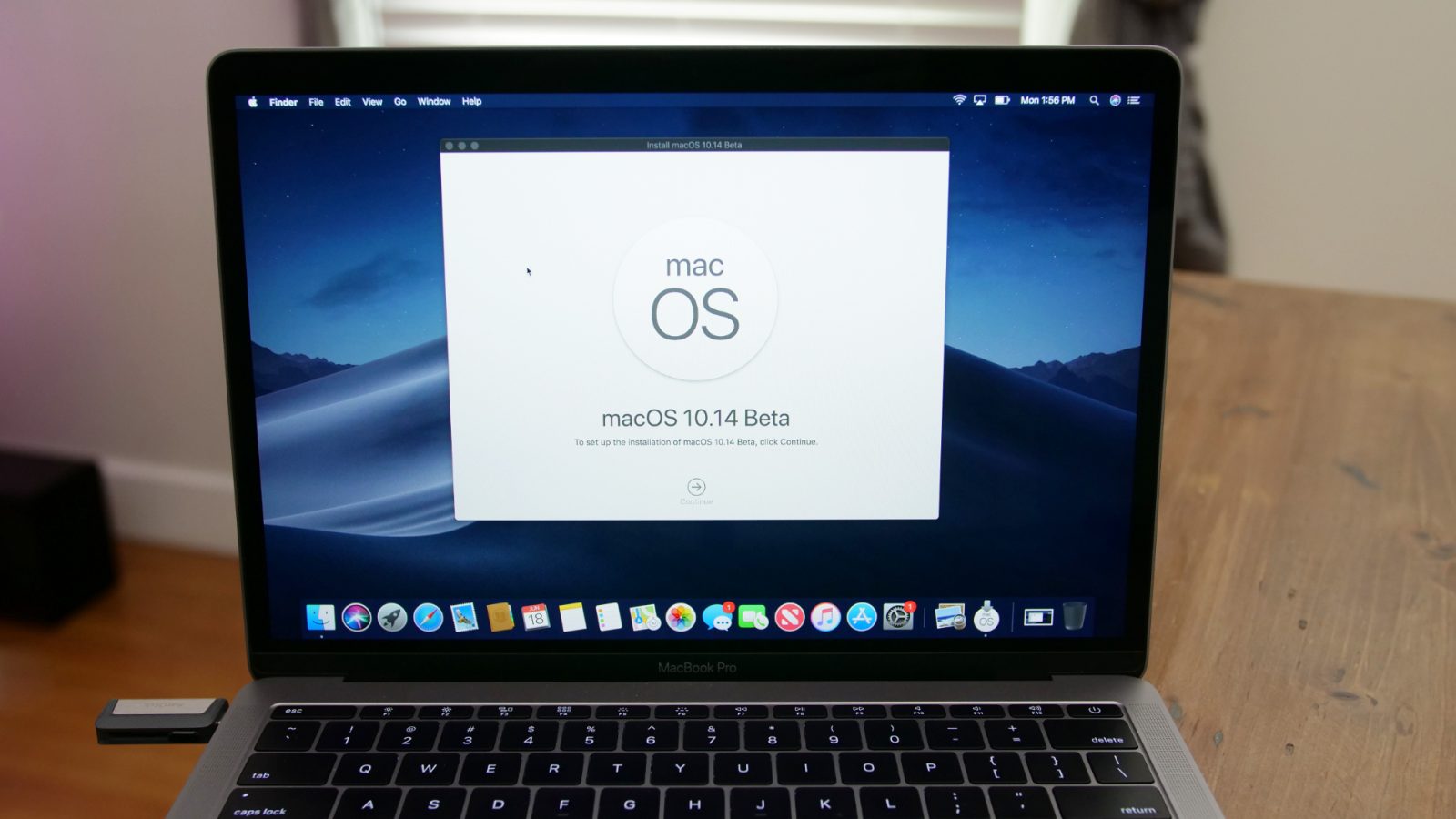Check compatibility
Sep 13, 2018 Some Mac users choose to perform a clean install of each major new version of Mac OS, erasing their drive and starting over. Here's a step-by-step guide to performing a clean install of newest macOS Mojave using a bootable USB drive without losing your data. In this article, I’ll answer all those questions, so you can be ready to upgrade your Mac to macOS Mojave when Apple officially releases its new operating system. The first thing to check is whether your Mac is compatible with Mojave. Any Mac released in mid 2012 or later will be able to run Mojave, and some older Mac Pros will. May 19, 2020 MacOS Mojave is a free software update for Macs that were introduced in mid-2012 or later, plus 2010 and 2012 Mac Pro models with recommended Metal-capable graphics cards, Apple stated.
You can upgrade to macOS Mojave from OS X Mountain Lion or later on any of the following Mac models. Your Mac also needs at least 2GB of memory and 12.5GB of available storage space, or up to 18.5GB of storage space when upgrading from OS X Yosemite or earlier.
MacBook introduced in 2015 or later
MacBook Air introduced in 2012 or later
MacBook Pro introduced in 2012 or later
Mac mini introduced in 2012 or later
iMac introduced in 2012 or later
iMac Pro (all models)
Mac Pro introduced in 2013, plus mid-2010 or mid-2012 models with a recommended Metal-capable graphics card.
To find your Mac model, memory, storage space, and macOS version, choose About This Mac from the Apple menu . If your Mac isn't compatible with macOS Mojave, the installer will let you know.
Make a backup
Before installing any upgrade, it’s a good idea to back up your Mac. Time Machine makes it simple, and other backup methods are also available. Learn how to back up your Mac.
Get connected
Mac Os Mojave Download
It takes time to download and install macOS, so make sure that you have a reliable Internet connection. If you're using a Mac notebook computer, plug it into AC power.
Download macOS Mojave
For the strongest security and latest features, find out whether you can upgrade to macOS Catalina, the latest version of the Mac operating system.
If you still need macOS Mojave, use this App Store link: Get macOS Mojave.
Begin installation
After downloading, the installer opens automatically.
Click Continue and follow the onscreen instructions. You might find it easiest to begin installation in the evening so that it can complete overnight, if needed.
If the installer asks for permission to install a helper tool, enter the administrator name and password that you use to log in to your Mac, then click Add Helper.
Allow installation to complete
Please allow installation to complete without putting your Mac to sleep or closing its lid. Your Mac might restart, show a progress bar, or show a blank screen several times as it installs both macOS and related updates to your Mac firmware.
Learn more
- If you have hardware or software that isn't compatible with Mojave, you might be able to install an earlier macOS, such as High Sierra, Sierra, or El Capitan.
- macOS Mojave won't install on top of a later version of macOS, but you can erase your disk first or install on another disk.
- You can use macOS Recovery to reinstall macOS.
macOS Mojave is here and by now you may have installed it and started playing with some of its new features, like the new Continuity Camera that lets you use your iPhone as a scanner on your Mac, or the new Gallery view in Finder, or maybe the new screenshot tools.
However, it’s also possible, given that macOS Mojave is a very new release and still being fine tuned by Apple, that you’ve run into problems and need to reinstall. Thankfully, that’s very easy to do. Before we get to that, however, it’s worth eliminating one other possible cause of the problems you may be experiencing.
When you install an OS on top of another OS, and then do the same the following year when the next version comes out, your Mac accumulates lots and lots of files that it doesn’t need. These are added when applications are installed, when they’re run, and when applications like Photos, Safari, and iTunes are used. Over time these junk files can hamper the performance of your Mac. The solution is to give your Mac a cleanup. We recommend CleanMyMac X. It scans your Mac for junk files and recommends to delete them safely. It can claw back tens of gigabytes of disk space, and improve your Mac’s performance. Give it a go, you can download it for free here, and see how much disk space it can give you back.
Before you reinstall macOS Mojave
There are two types of reinstallation. One installs a new copy of macOS Mojave over the current version and leaves everything else intact. The other erases your entire startup disk and installs a clean version of Mojave. The latter is more likely to fix problems and help your Mac run faster, but you’ll have to reinstall all your applications and reconfigure all your settings.
Whichever of the two options you choose, you should back up your Mac first. If you use Time Machine to backup to an external disk or a network drive, you can restore all your applications and settings from that backup after you reinstall macOS Mojave. If you plan to run a clean reinstallation, that’s definitely the simplest route. If you prefer not to use Time Machine, you can use any other backup application, or clone your entire disk.
If you’re reinstalling because you’re going to sell or give away your Mac, you should sign out of iCloud, iTunes, and iMessage first, then run a clean installation.
How to reinstall macOS Mojave
Once you’ve backed up your Mac, you’re ready to begin the reinstallation process.
The simplest way to install macOS Mojave, and the method that Apple recommends, is to go to the App Store, find Mojave in the Quick Links section on the right hand side of the front page, click it and then follow the instructions to download and install it.
If you’re having trouble with the App Store, or you need to run a clean install, you can do the following.
1. Restart your Mac using one of the following keyboard commands:
- Command+R — this will reinstall the version of the OS that was most recently installed on your Mac.
- Command+Option+R — this will reinstall the latest version of the OS that is compatible with your Mac.
2. When the macOS window appears, if you’re not performing a clean installation, skip to step 7.
3. Click on Disk Utilities and choose the Erase tab.


4. Give your disk a name, choose APFS or Mac OS Extended (Journaled), and if Scheme is available, set it to GUID Partition Map.
5. Press Erase.
6. When it’s finished, quit Disk Utility to go back to macOS Utilities.
7. Choose Reinstall macOS.
8. Click Continue and follow the instructions. You’ll be asked to choose the disk you want to install macOS Mojave on, if you down’t see your startup disk, select Show All Disks.
9. Select Install and wait for the installation to complete and your Mac to restart.
If you ran a clean installation, you’ll be taken to the Setup Assistant to go through the process of reconfiguring your Mac. If you made a Time Machine backup before reinstalling, make sure it’s connected.
Mac Os High Sierra
During setup, you’ll be asked if you want to transfer data from another Mac or a backup. Choose that option then navigate to the Time Machine backup to restore data. You’ll be given the option to transfer any or all of: Applications; user accounts; other files and folders; and computer and network settings. Choose the option you want and press Continue.
If you don’t transfer data during setup, you can do it at any time using Migration Assistant in Applications>Utilities.
Reinstalling macOS Mojave is very easy. Just make sure you backup your Mac first and download CleanMyMac X(free version) to give it a good clean up!